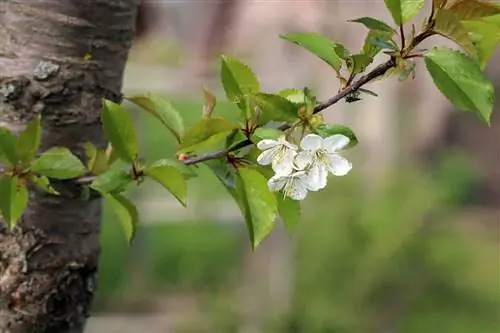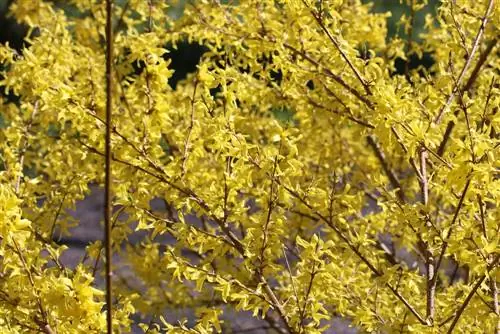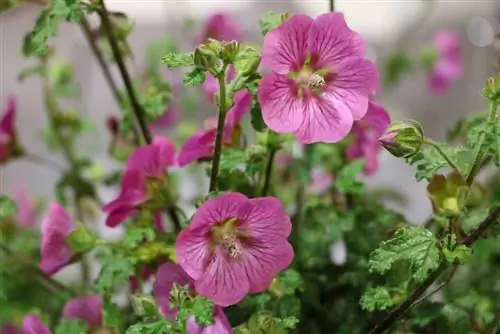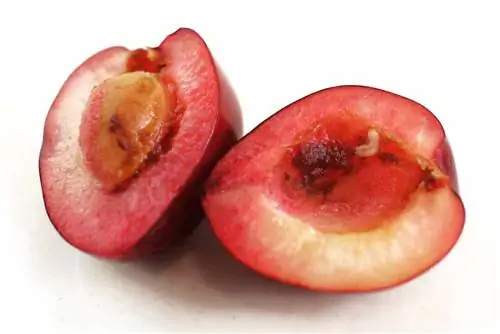- Author admin [email protected].
- Public 2023-12-17 03:39.
- Last modified 2025-06-01 06:48.
The Cornus mas belongs to the dogwood family. He comes from the Caucasus and now feels at home in Germany. It's actually hard to understand why it's so rarely found in our gardens. Its bright yellow, early flowers shine in early spring as if they were marked with a highlighter. Its bright red, oval fruits are enchanting in autumn and even taste good.
Before the cut
Since the cornelian cherry is a slow-growing shrub, it normally doesn't need any pruning. However, if you want to cultivate such a dirndl bush as a tree or hedge in your garden, you can support this with regular pruning. To do this, it is helpful to first find out something about the habitus and growth characteristics of the cornelian cherry. This means you can remove the right shoots at the right time to effectively support growth and shape.
leaves, blossom
Some of the leaves turn yellow and orange-red in autumn, some of them remain green and then fall off. The leaves are up to 10 centimeters long, egg-shaped and tapered. The leaf veins decoratively pattern the shiny green leaf. Its early flowering in March makes the cornelian cherry an important first bee food of the year. The golden yellow flowers look like small, ball-shaped sparklers.
Several starlets with their anthers and pistils emerge from four petals. The flowers and leaf buds are formed in autumn, which is important to know when cutting. The spherical winter buds form the flowers, the elongated ones form the leaves next year. The flowers grow on two-year-old wood and open before the leaf buds.
Fruits

Beautiful, red, oval fruits form in autumn. They are similar to cherries and also a little like olives in terms of structure. The main harvest time is in September. Different varieties may differ in harvest time, taste and appearance. For a rich harvest, it is advisable to plant several bushes, although the cornelian cherry is monoecious and its flowers are hermaphroditic. To enjoy them raw and somewhat sweet, you should wait until they are almost dark red and fall off on their own before harvesting.
Roots, wood
The yellow dogwood, as the cornelian cherry is also called, has deep roots, but also has long, shallow roots all around. However, no runners form on this. In this way, new bushes can only be grown by lowering some shoots or cutting cuttings. The Cornus mas is one of the so-called heart roots. Cornu mas, the name says it all. The Latin word “Cornu mas” means “male horn” and thus indicates the exceptional hardness of the wood. Cornelian wood was previously used to make weapons, tool handles and walking sticks. It's so hard and heavy that it sinks in the water.
Growth
The dirndl bush forms multi-stemmed, emerging branches. The branching starts right at the bottom. Unpruned it grows up to 3.50 meters wide and up to 5 meters high. The growth rate depends on the variety and location conditions, but at 10 to 25 cm per year it is not particularly fast-growing. Nevertheless, the cornelian cherry is generally considered to be very easy to cut.
Cut variants
Depending on the location and the purpose, as a solitary tree or hedge, the cornelian cherry can be pruned. Almost all pruning work is done after flowering. Compared to other flowering natural shrubs, the Cornus mas can be easily cut into shape as a hedge. They can live up to 100 years and are also an impressive eye-catcher as a solitary tree. The following cut variants are possible for the cornelian cherry:
- Thinning cut, tapering cut
- Strong pruning, cut to the cane
- Hedge cutting (topiary)
- Hedge cutting (free-growing hedge)
- Pruning (tree, hedge)
- Cut cuttings
- Plant cutting
Instructions for the cutting variations
- Always the right cut at the right time -
Blending
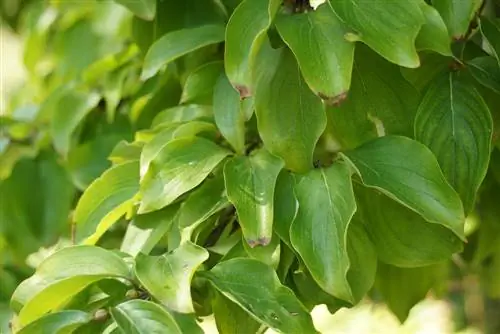
Thinning may be necessary to give the tree or shrub more structure and air. This promotes new growth and flowering next year. The flowers always develop on new shoots from the previous year. This cut is done in spring, after flowering. If no particular form is to be promoted, it is sufficient to carry out this thinning cut every two or three years. Some older shoots are cut directly on the ground. Younger ground shoots are only shortened a little.
Strong pruning
If a yellow dogwood bush has spread too much and grown wild, it may be necessary to cut it down completely. This is also called “putting on the stick”. This is a radical cut in which all ground branches are radically cut off to a height of 20 centimeters.be sawn off. This pruning is mainly carried out when the vegetation is dormant. The cornelian cherry tolerates such a radical cut very well. But you have to expect that they will have a bit of a hard time flowering a year or two later.
Cutting shaped hedges
If you use the cornelian cherry as a wind and privacy hedge, you can't avoid regular, annual pruning. With a hedge made of Cornus mas you not only have an easy-care and visually varied border, but you also set ecologically valuable accents for many local creatures.
There are only a few native, flowering shrubs that are as easy to cut as the dirndl bushes. Topiary pruning is carried out annually after flowering:
- mainly in the lower area to encourage branching there
- when the desired height is reached, the height is also shortened
- A radical cut in winter promotes cane rash, for a denser hedge
Form hedge, training cut
For a cutting hedge, the young plants should be trimmed early on so that they branch out as often as possible. For training pruning, the new shoots are regularly shortened until the hedge has reached the desired height. To ensure lush flower and leaf growth, make sure that the hedge tapers slightly towards the top. With a hedge height of two meters, you can go to a width of one meter at the base. At the top then to about 80 centimeters.
Cutting free-growing hedges
Even a free-growing hedge should be trimmed regularly after flowering. The main thing is about rejuvenating pruning and promoting flowering next year. To do this you do the following work:
- remove dead shoots, dead wood
- Removing water shoots
- shorten shoots that are too long
- cut old branches directly at the base
If a free-growing hedge has not been trimmed for a long time, it can appear too bulky or become bare, especially in the lower area. A radical cut up to 20 centimeters above the ground can also help here. This radical rejuvenation cut is carried out in winter so that it can recover best. There will be no flowering next year, but you can accept that in favor of numerous, he althy, new shoots.
Cutting a tree
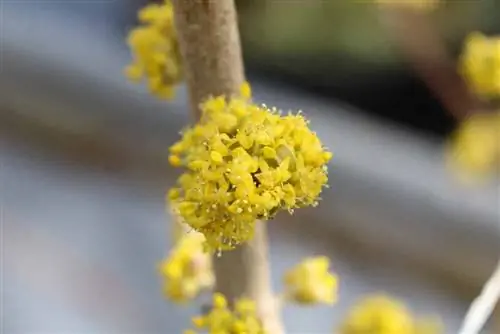
The cornelian cherry also makes an excellent tree. The best thing to do when shopping is to choose a plant that has as strong a shoot as possible and has not otherwise been trained to have many deep branches. Then you let them grow as freely as possible. Only branches that start far down should be removed regularly.
Cut cuttings
Another reason to prune your cornelian cherry is to obtain cuttings to propagate it. Cuttings can be taken in spring after flowering or in winter. Semi-lignified shoots are best. For cuttings, shoots approximately 20 centimeters long are required. You remove the lower leaves and simply stick them in the ground.
Plant cutting
The cornelian cherry is also sold bare root. Before planting in spring or autumn, the roots are usually shortened slightly. The plant itself is also shortened before planting. With this type of planting, the cornelian cherries grow very slowly for the first few years and you have to be patient.
Tip:
Bare root products are usually sold in larger containers and are ideal for planting extensive hedges. Bale or even container goods can be quite expensive to purchase for larger quantities.


